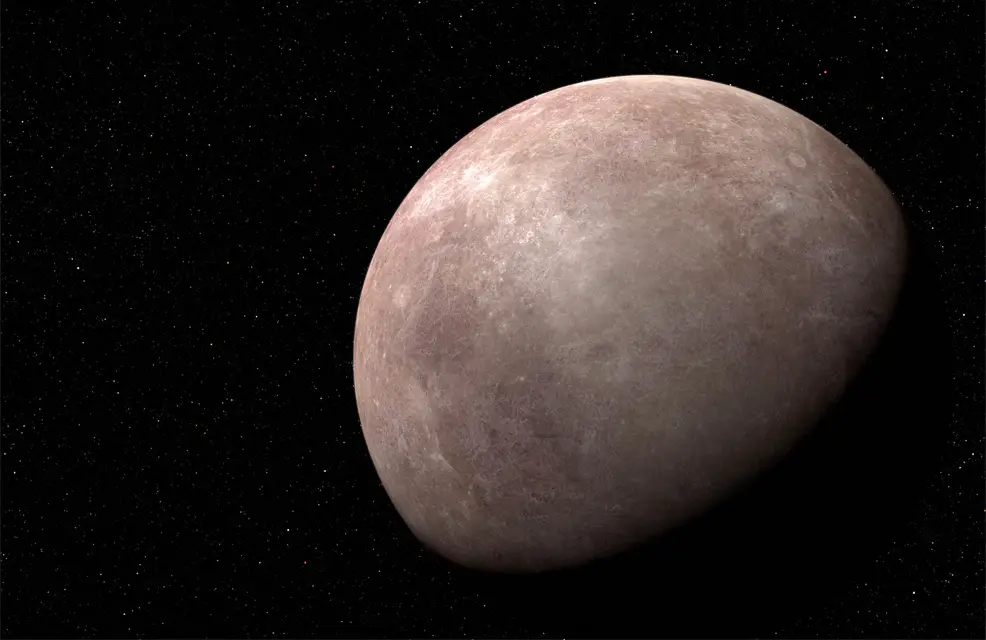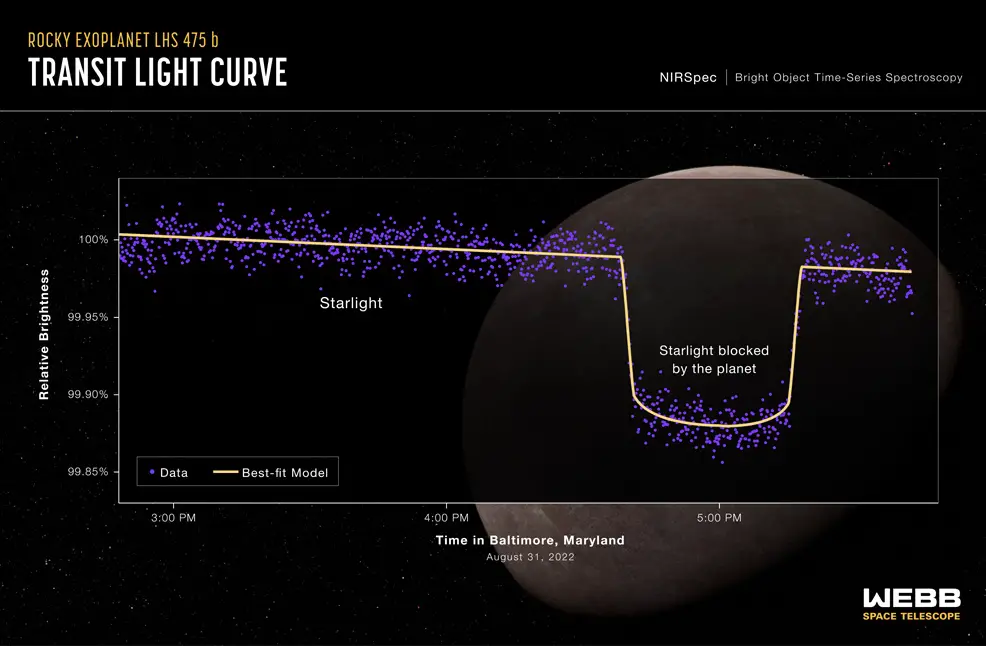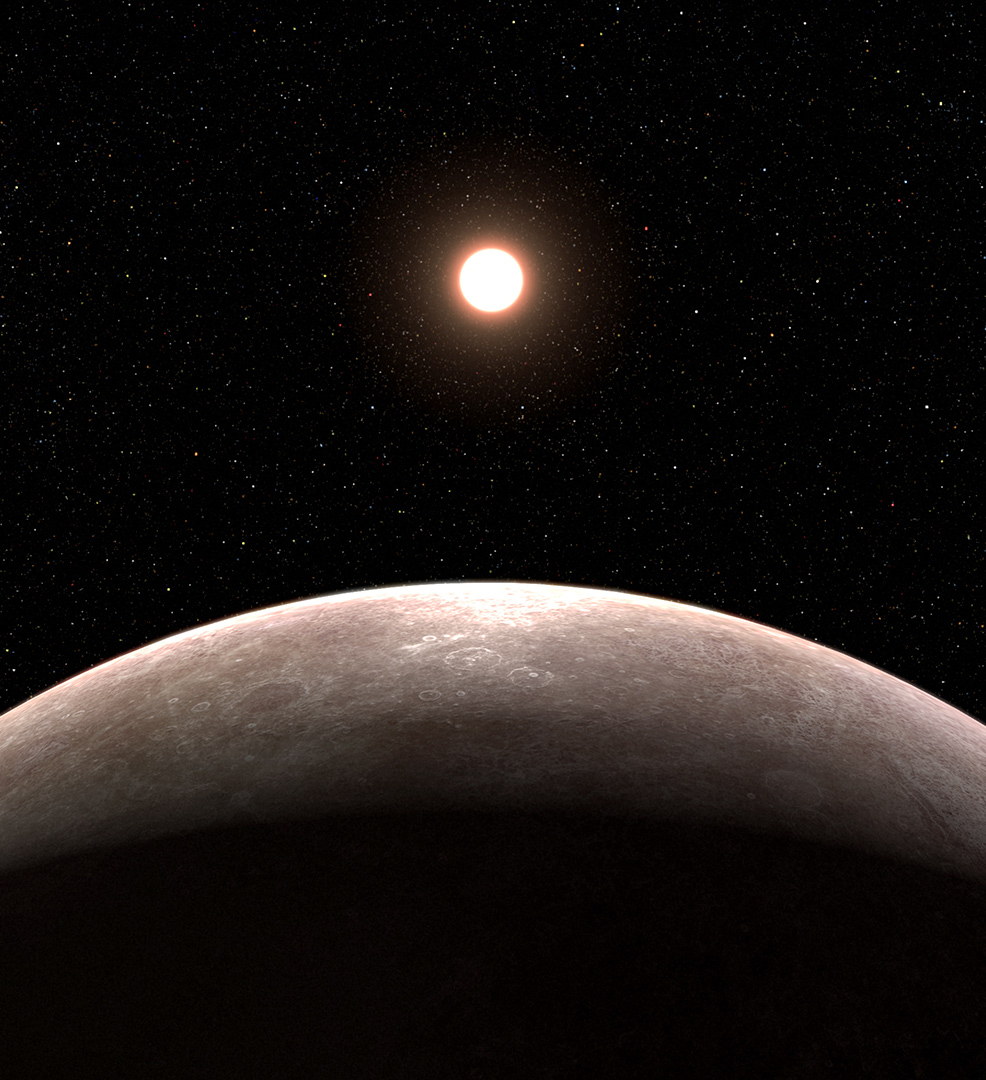
21st January 2023 James Webb Space Telescope confirms its first exoplanet NASA scientists report the discovery of LHS 475 b, an exoplanet almost identical in size and mass to Earth, and the first to be confirmed by the James Webb Space Telescope.
LHS 475 is a red dwarf star with about a quarter of our Sun's mass and radius, located relatively close in our stellar neighbourhood at 41 light years away. Astronomers have now confirmed that the system contains at least one known exoplanet, designated LHS 475 b. The newly found planet is remarkably similar to Earth in terms of size, with 99% of its radius. The mass is estimated at 91% of Earth's. The similarities are likely to end there, however, as it orbits the star in just two days and is thought to be tidally locked, meaning one side always faces the star, while the other is permanently in night. Researchers initially detected a signal in data from the Transiting Exoplanet Survey Satellite (TESS). They then confirmed the existence of a planet and some of its characteristics using the Near Infrared Spectrograph (NIRSpec) on the James Webb Space Telescope, which included its transmission spectrum. A paper on the discovery is available this month on the open-access arXiv server.
The data is consistent with a featureless spectrum – which would be expected of a planet with no atmosphere – but is also consistent with some types of atmosphere such as tenuous carbon dioxide, similar to Mars. Either way, LHS 475 b is very hot, with an equilibrium temperature of 586 K (313 °C; 595 °F). Assuming the planet has little to no atmosphere, its dayside temperature is estimated at 748 K (475 °C; 887 °F). A thick, methane-dominated atmosphere like that of Saturn's moon Titan can be ruled out. Researchers will follow up this summer with more precise measurements by Webb, which could allow them to definitively conclude if the planet has an atmosphere and what it may consist of. Among all operating telescopes, only Webb is capable of characterising the atmospheres of Earth-sized exoplanets. "The observatory's data are beautiful," said Erin May, astrophysicist at Johns Hopkins University Applied Physics Lab. "The telescope is so sensitive that it can easily detect a range of molecules, but we can't yet make any definitive conclusions about the planet's atmosphere." "These first observational results from an Earth-size, rocky planet open the door to many future possibilities for studying rocky planet atmospheres with Webb," said Mark Clampin, Astrophysics Division director at NASA Headquarters in Washington. "Webb is bringing us closer and closer to a new understanding of Earth-like worlds outside our Solar System, and the mission is only just getting started."
Comments »
If you enjoyed this article, please consider sharing it:
|









